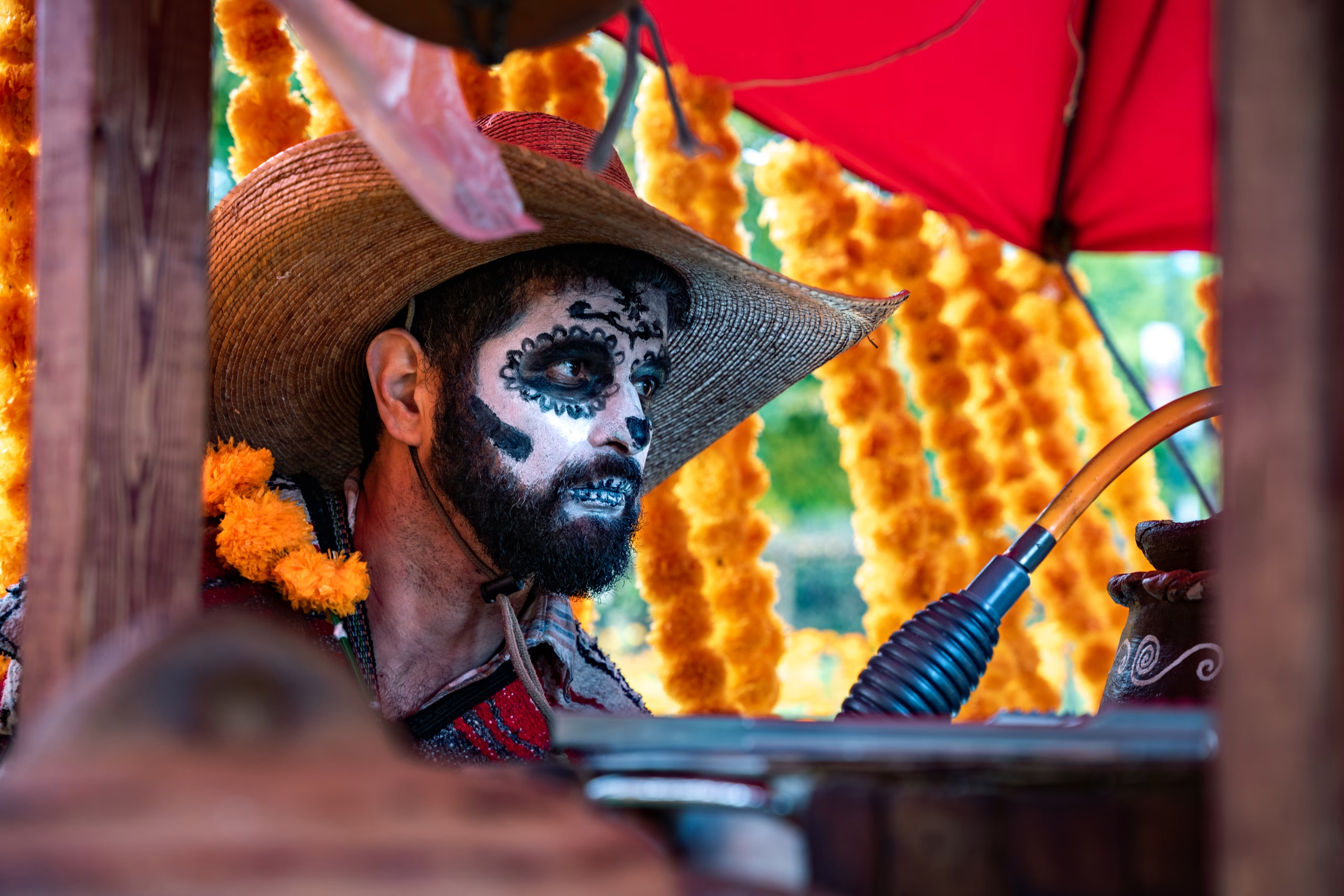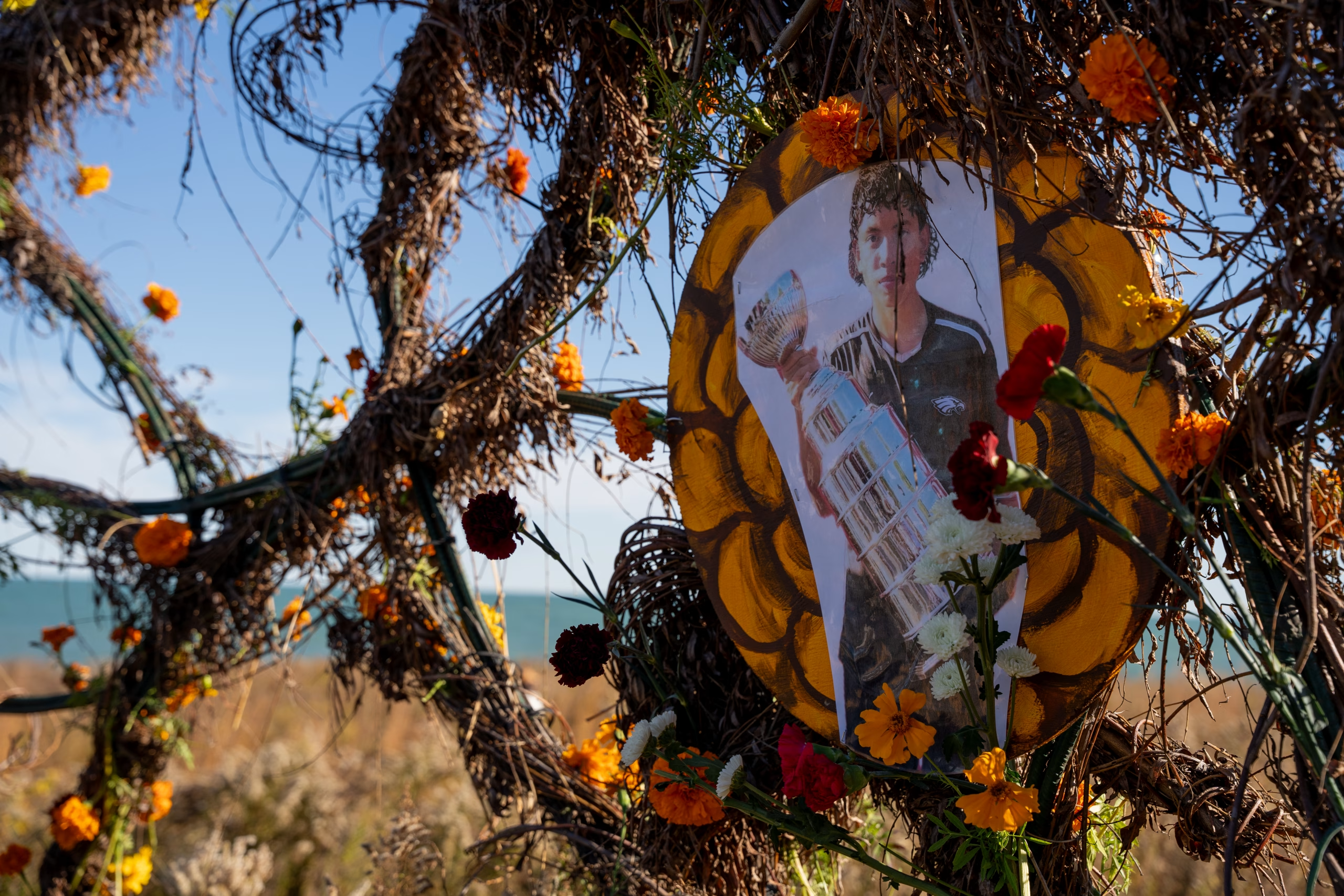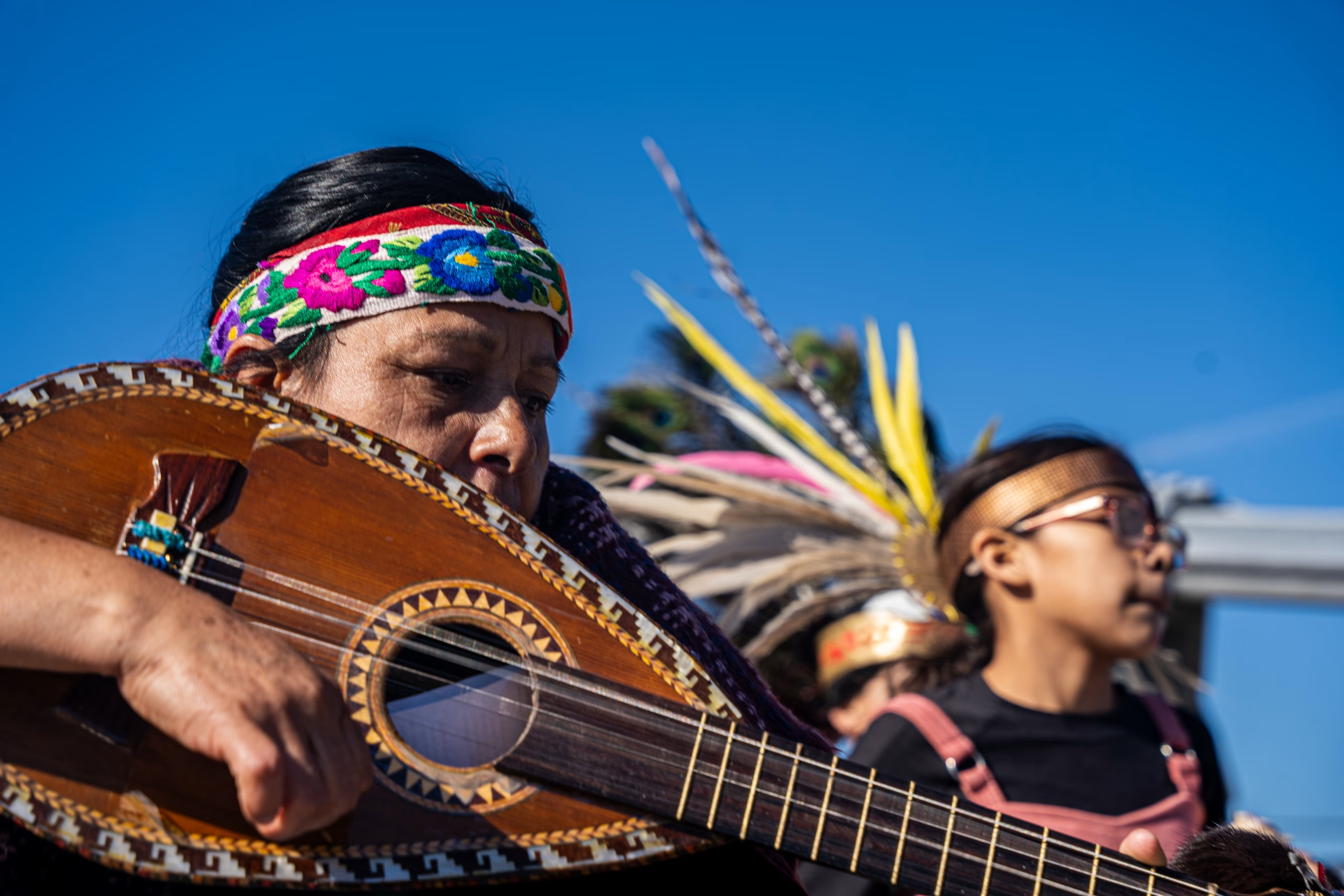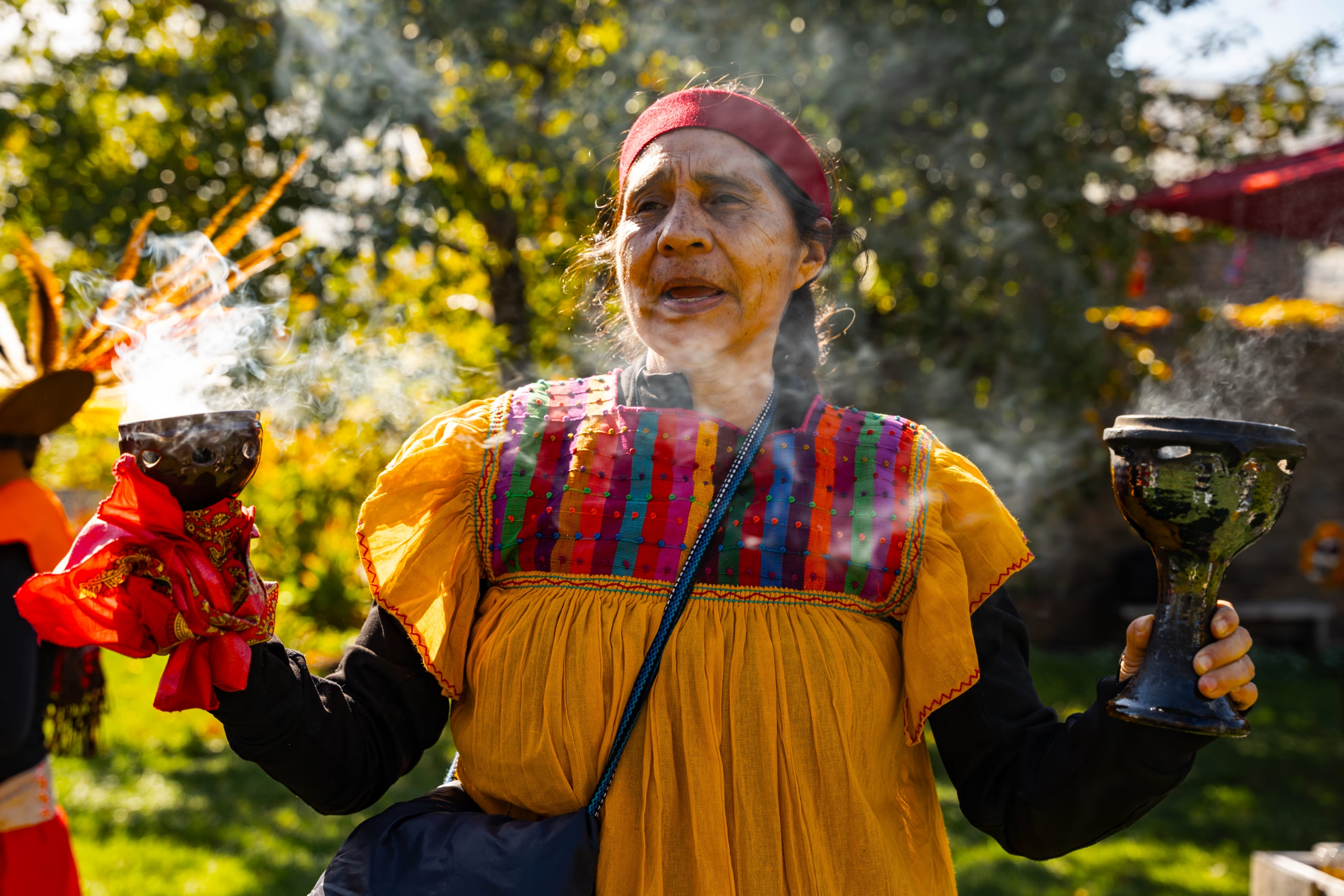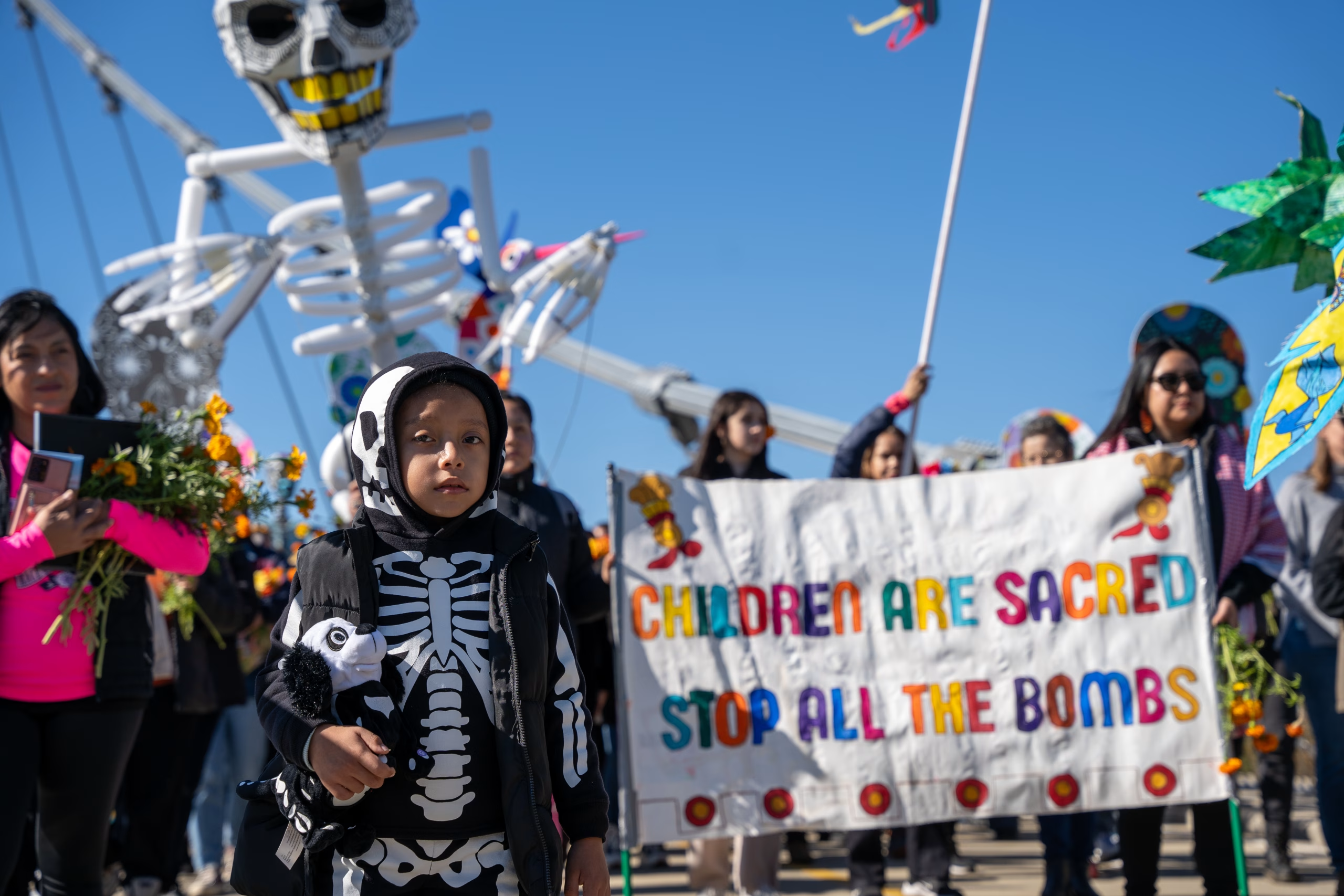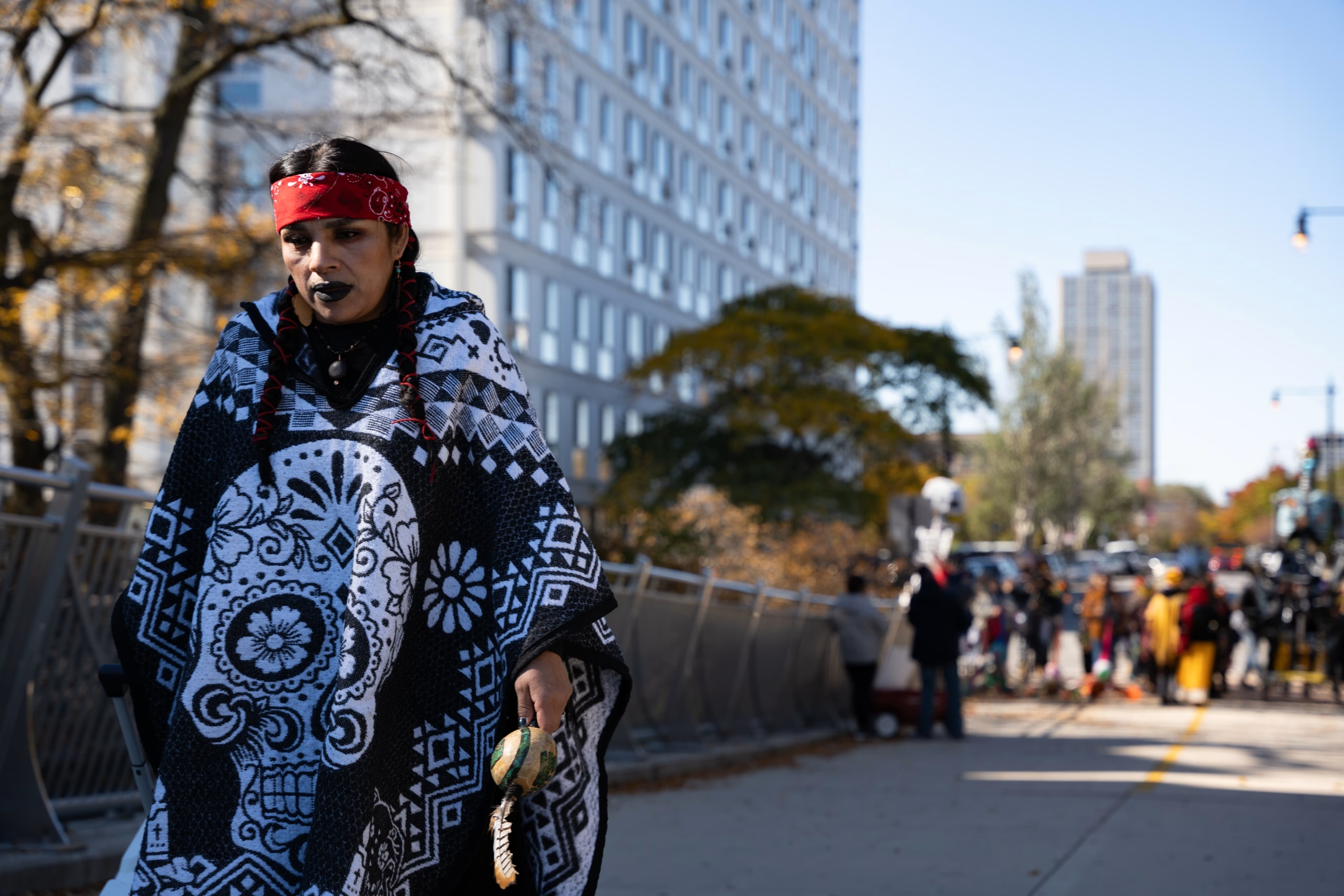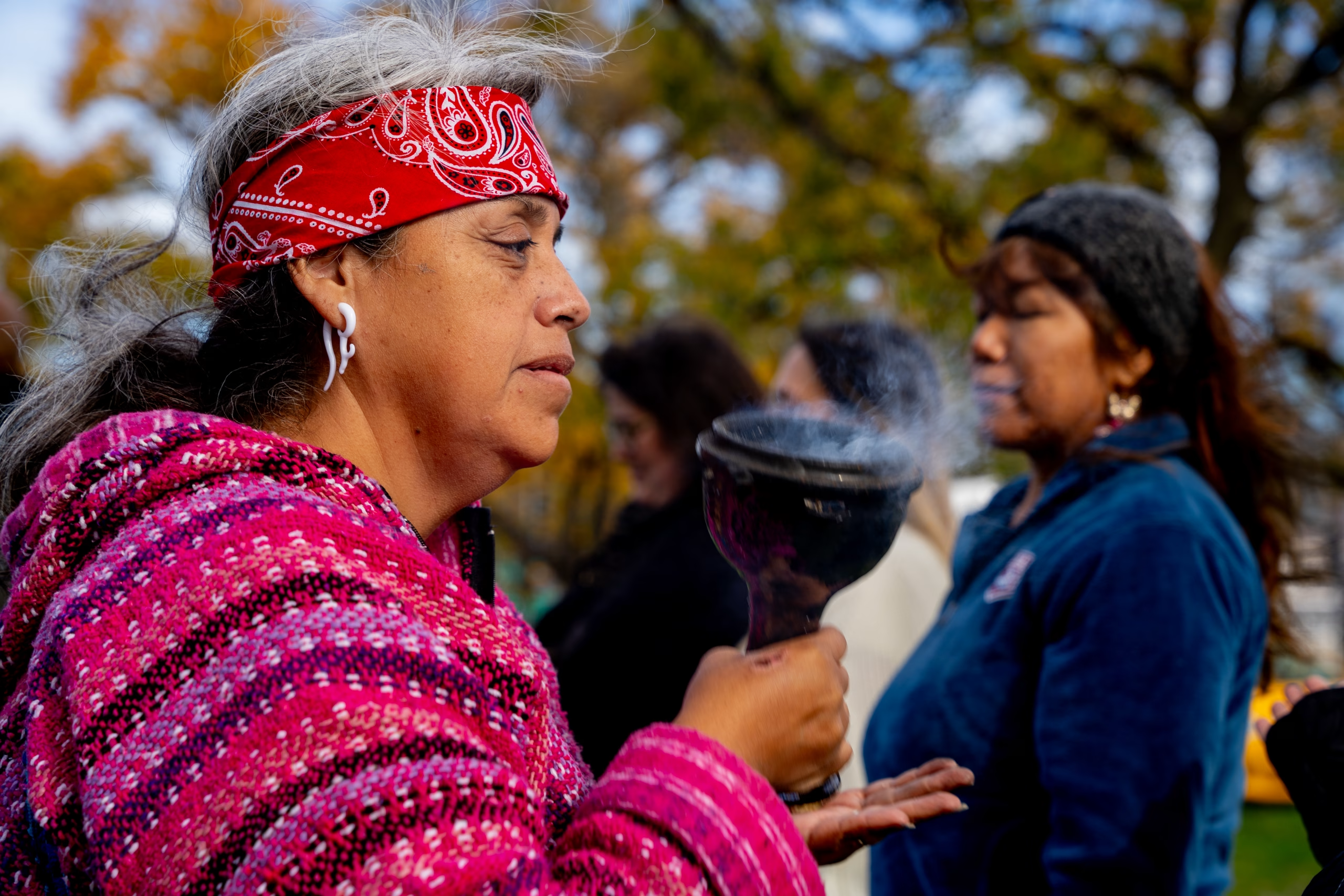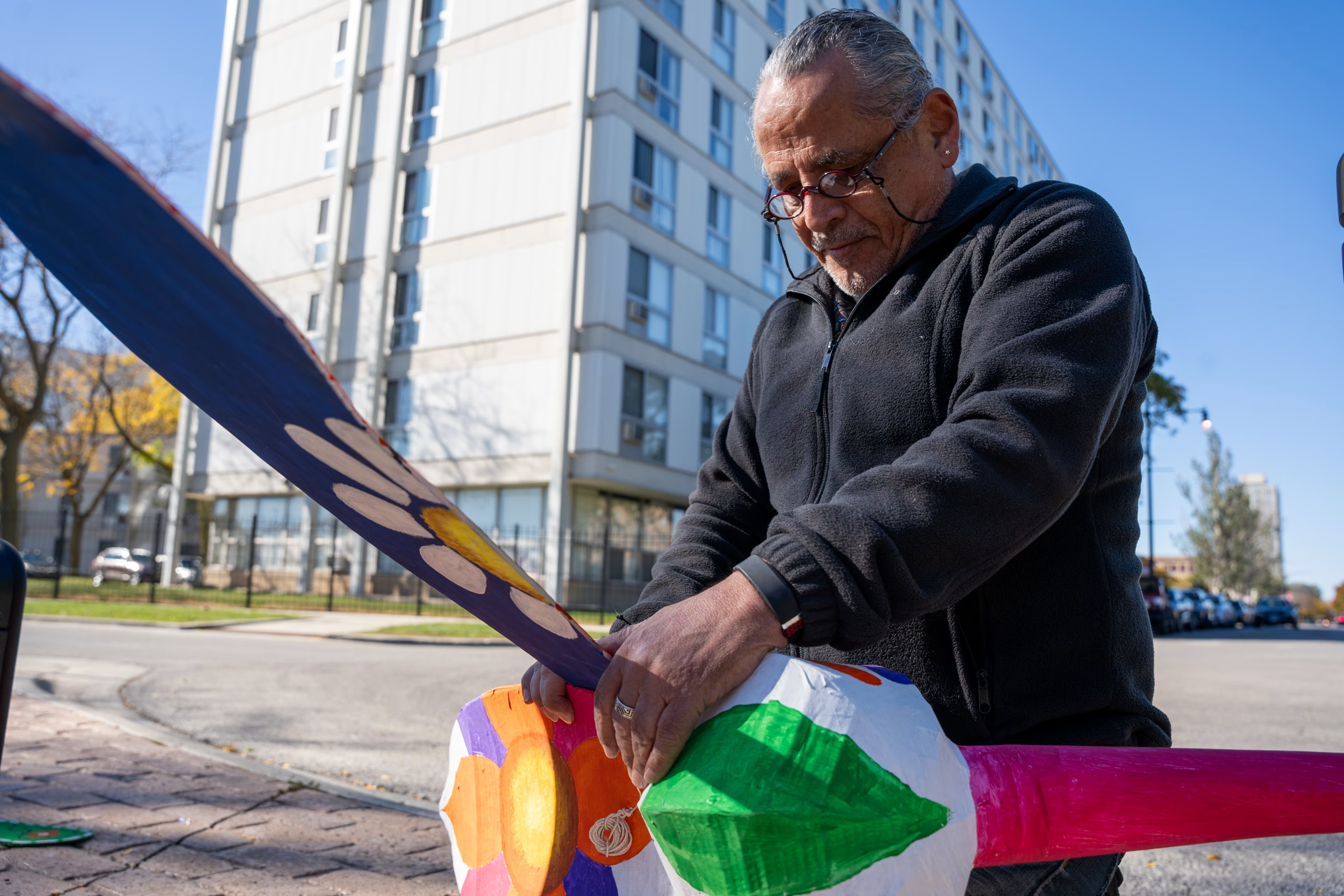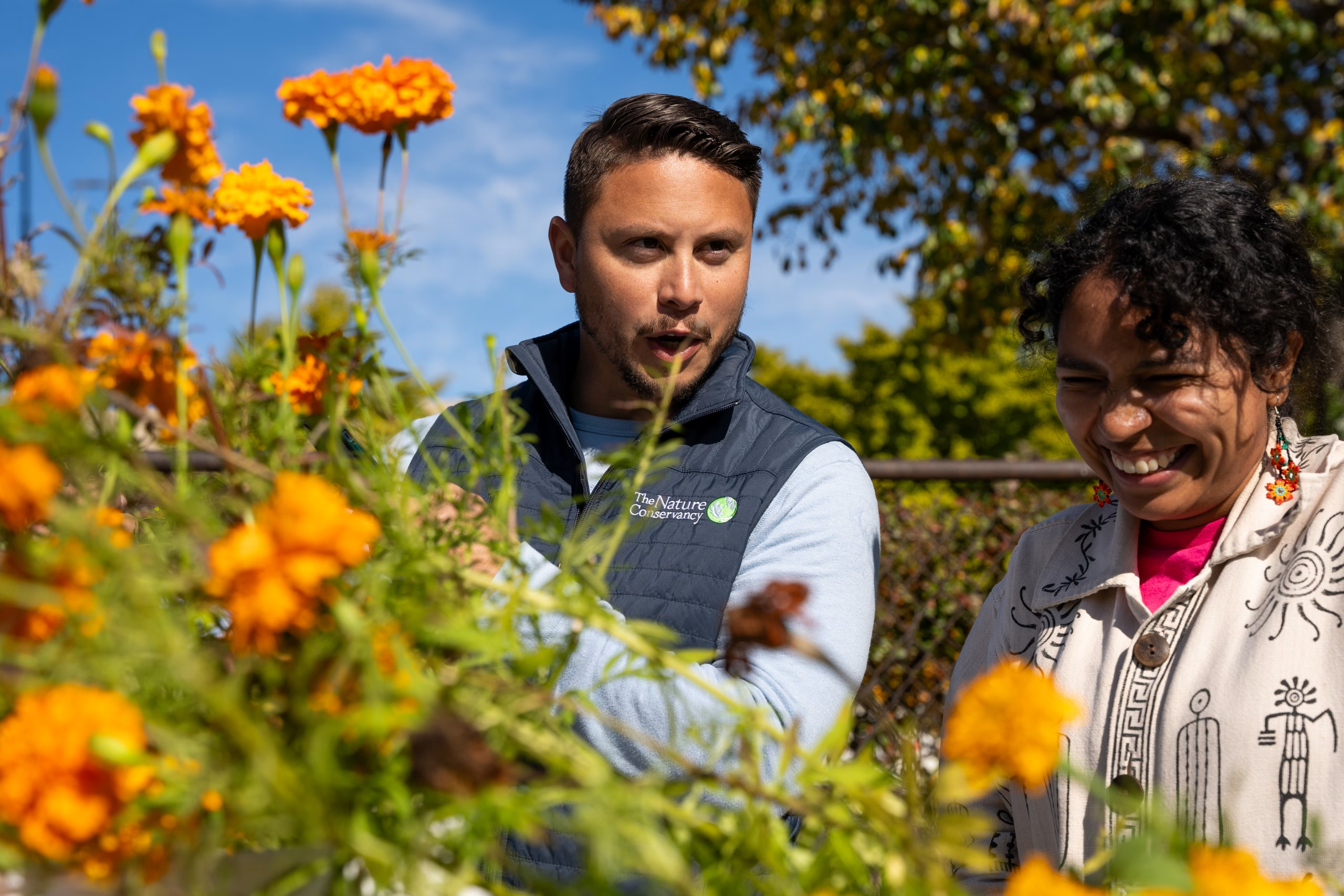Crowds of people arrived early in the morning on 35th Street on Oct. 26 to eat tamales, paint their faces as skulls, and receive cempasúchil flowers, or marigolds, as they prepared to cross the bridge that connected them to La Ronda Parakata – a community ceremonial space where Day of the Dead is celebrated.
Ángel Salgado, a Pilsen resident, along with his family and other community members, walked in procession to La Ronda Parakata to visit the altars dedicated to their deceased family members.
This year, an altar dedicated to Salgado’s son, Juan Sebastian Salgado, stands out among the others.
On Aug. 19, a week before the end of classes at Benito Juarez Community Academy, Salgado’s son offered one of his teammates a ride home after soccer practice in Pilsen.
“Dad, I’m just dropping off Omar, and then I’ll be home for dinner. I’m really hungry,” said Salgado, recalling his son’s last words.
But his son never made it home for dinner, Salgado said. On his way, he was intercepted by a vehicle and shot. He was then taken to Mount Sinai Hospital, where he was pronounced dead.
“He was a good boy, always fighting for his teammates in everything they needed,” said Salgado.
Two months later, the family celebrated Day of the Dead without their son for the first time.
Although Salgado said these dates are especially difficult, his family found support in the community which has helped “soothe some of the pain.”
Although Salgado has been a Pilsen resident for years, this was his first time at La Ronda Parakata, which was founded in 2016. A community member invited Salgado, asking if they could honor his son with an altar, he said.
“It was very meaningful to me,” said Salgado, “to see the community and see them organize something so beautiful to honor the dead.”
“For us, remembering the dead is making them bloom again and bringing them back to life,” said Alfonso “Piloto” Nieves, a local artist who built La Ronda Parakata, along with Héctor Duarte, an artist from Pilsen.
The event offers an opportunity for families who haven’t been able to return to Mexico to share the celebration with younger generations, and “give them a taste of what tradition is like in Mexico,” Nieves said.
The goal was to create a ceremonial space for the community, said Duarte.
The space is adorned with a ring structure or “ronda,” inspired by a butterfly’s movement, Duarte said.
“It speaks of how we go north and south,” he added, referring to the monarch butterfly’s migration, which has become a global symbol representing migrants’ journeys.
Although the space is open year-round, its main event is the Day of the Dead celebration, said Lorena López, a volunteer at the event. The space is cleaned, plants are set up, and the structure is decorated with cempasúchil flowers which are believed to leave an aroma that guides souls.
Community members of all ages gather to pick up the flowers used in the ceremony from the UIC gardens during the week of the event, Lopez said.
As families walked into La Ronda Parakata, Nely Guerrero, a sahumadora or a woman who carries incense during processions, was at work cleansing the five altars for the ceremony.
“You are a seed. I am a seed. We have to die to live in the beyond,” said Guerrero as she prepared for another ceremony in her role as sahumadora, a position that brings her from Cuernavaca, Mexico, to Chicago every October.
“Sahumar is a cleansing of your soul, mind, spirit, and physical body,” explained Guerrero, who, during ceremonies, is in charge of the popoxcomitl, the traditional container used to burn charcoal, copal, and other herbs.
During the Day of the Dead, the sahumadora, serves as the bridge between the living and the dead, she said. As the families arrived, Guererro cleansed them in preparation to greet their relatives who had passed on– including Salgado’s family.
Guerrero said this is one of the reasons she travels to Chicago each year. She remembers the monthly celebrations, where she learned how to be a sahumadora, which her family held to honor their culture when she was a child.
Now, she finds satisfaction in sharing that culture with those who are far from home, channelling “that energy of who we are as Mexicans.”
She stays with different people when in Chicago, who welcome her and take her to ceremonies throughout the month, she said. Though she’s far from home, it’s all worth it when she sees the faces of those who are grieving filled with hope– like Salgado and his family.
“These days, he is remembered, as if bringing him to life again,” said Salgado, noting that the community’s efforts during the celebration are not only for the deceased but “for the families who remain.”
The whole community has rallied behind Salgado, following the death of his son, and treated his family with kindness, Salgado said.
“Those who knew him have spoken so beautifully about him,” he said. “and those who didn’t know him, well, they know him now in death, right?”
Salgado celebrated his son’s life, and honored him by sharing with others that his son was a good student, a good athlete and a good friend to all he knew, he said.
“We all come to bloom, and depending on how we guide ourselves in this life, we leave behind our flowers, our seeds,” Nieves said. “And that’s why each time they’re remembered, they bloom again in our hearts.”


